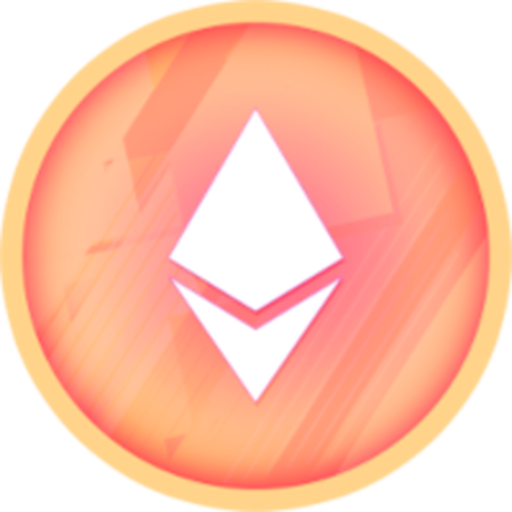Rocket Pool ETH vs SKALE – Price, Market Cap & Performance Compared
Which coin performs better – Rocket Pool ETH or SKALE?
We compare the current price (4 755.75 $ vs 0.02425 $), market cap (1 866 244 093 vs 144 587 259) and all-time high (5 618.08 vs 1.22).
Find out which one stands out right now!
Rocket Pool ETH is currently trading at 4 755.75 $, while SKALE stands at 0.02425 $. These cryptocurrencies differ not only in price but also in market presence.
The market cap of Rocket Pool ETH is around 1 866 244 093, and SKALE has about 144 587 259. Their respective all-time highs are 5 618.08 for Rocket Pool ETH and 1.22 for SKALE.
Daily trading volume and the 24h price change (-0.08533 % vs 0.25563 %) also offer key insights.
Compare all metrics now and see which coin fits your investment strategy best!
Rocket Pool ETH
Rocket Pool ETH is a decentralized Ethereum staking platform that simplifies the process for individuals looking to participate in Ethereum's proof-of-stake consensus. By allowing users to pool their ETH with others, it reduces the barriers to entry for staking, making it accessible to those who may not have the significant amount of ETH required for solo staking. Additionally, Rocket Pool offers enhanced security through smart contracts and decentralized nodes, ensuring a trustworthy staking experience.
more informationSKALE
SKALE is a blockchain network designed to enhance Ethereum’s capabilities by providing high-speed and secure off-chain solutions. It allows developers to run decentralized applications with significantly lower latency and increased efficiency due to its innovative elastic sidechains. This adaptability not only reduces transaction costs but also supports a more scalable infrastructure for a broad range of use cases.
more information

|

|
|
|
|
General Information |
|
|---|---|
|
Title
Rocket Pool ETH
|
Title
SKALE
|
|
Symbol
reth
|
Symbol
skl
|
|
Whitepaper
-
|
Whitepaper
-
|
|
Website
|
Website
|
|
Community
-
|
Community
-
|
|
Last Updated
2025-09-24 23:29
|
Last Updated
2025-09-24 23:28
|
Price Data |
|
|---|---|
|
Current Price $
4 755.75 $
|
Current Price $
0.02425 $
|
|
High 24h
4 805.84 $
|
High 24h
0.02484 $
|
|
Low 24h
4 685.85 $
|
Low 24h
0.02378 $
|
|
Price Change 24h
-4.06152 $
|
Price Change 24h
0.00006 $
|
|
Price Change % 24h
-0.08533 %
|
Price Change % 24h
0.25563 %
|
Market Data |
|
|---|---|
|
Market Cap
1 866 244 093
|
Market Cap
144 587 259
|
|
Total Volume
3 855 195
|
Total Volume
8 571 607
|
|
Market Cap Change 24h
-3 253 996
|
Market Cap Change 24h
767 433
|
|
Market Cap Change % 24h
-0.17406 %
|
Market Cap Change % 24h
0.53361 %
|
|
Return on Investment (ROI)
-
|
Return on Investment (ROI)
-
|
Supply and Availability |
|
|---|---|
|
Circulating Supply
392 510
|
Circulating Supply
5 960 602 671
|
|
Total Supply
392 510
|
Total Supply
6 076 000 000
|
|
Max Supply
-
|
Max Supply
7 000 000 000
|
Historical Data |
|
|---|---|
|
All Time High (ATH)
5 618.08
|
All Time High (ATH)
1.22
|
|
ATH Change %
-15.36977 %
|
ATH Change %
-98.00533 %
|
|
ATH Date
2025-08-24 19:25
|
ATH Date
2021-03-12 05:14
|
|
All Time Low (ATL)
887.26
|
All Time Low (ATL)
0.01596
|
|
ATL Change %
435.87187 %
|
ATL Change %
51.98167 %
|
|
ATL Date
2022-06-18 20:55
|
ATL Date
2025-06-22 20:30
|
Rocket Pool ETH
Understanding Rocket Pool ETH (rETH): A Decentralized Staking Solution
Rocket Pool ETH, commonly referred to by its token symbol rETH, is a derivative of Ethereum that is part of the Rocket Pool protocol. As a decentralized staking platform, Rocket Pool provides Ethereum holders with an opportunity to stake their assets in a flexible, trustless environment. This write-up explores the unique features, advantages, and challenges of rETH, its historical performance, and the prospects of this innovative staking system.
Key Features of Rocket Pool ETH
Rocket Pool is designed to democratize Ethereum staking by allowing users to stake ETH without needing to manage a validator node. Users deposit their ETH into the Rocket Pool, and in return, receive rETH tokens that accrue rewards automatically. The protocol operates using a network of decentralized node operators, reducing the complexity and barriers involved in traditional Ethereum staking.
Advantages of rETH
One of the main advantages of Rocket Pool ETH is its accessibility. Users can stake their ETH without needing the 32 ETH required by Ethereum 2.0's native staking protocol. This opens up staking opportunities to a broader audience. Moreover, Rocket Pool introduces decentralization to the staking process, mitigating risks associated with centralized platforms.
rETH also promotes liquidity. By holding rETH tokens, users maintain the ability to trade or collateralize their staked assets, offering flexibility not traditionally available with staked Ethereum.
Potential Drawbacks
While Rocket Pool ETH offers numerous benefits, there are potential downsides. The protocol's complexity may pose challenges for casual investors who are not well-versed in blockchain technology. Additionally, as a newer technology, decentralized staking solutions like Rocket Pool carry risks including smart contract vulnerabilities and price volatility.
Historical Performance of rETH
Rocket Pool ETH has experienced significant price fluctuations since its inception. Following its all-time high (ATH) of $4814.31 on December 1, 2021, rETH saw a drastic correction. Its all-time low (ATL) of $887.26 occurred on June 18, 2022. Despite these fluctuations, rETH has shown resilience, recovering by over 221% from its ATL.
With a current price of $2853.09, it remains about 40.67% below its ATH, reflecting broader market conditions and the inherent volatility in crypto markets.
Future Outlook for Rocket Pool ETH
Looking forward, the future of Rocket Pool ETH hinges on the broader adoption of Ethereum 2.0 and the demand for decentralized staking platforms. As staking on Ethereum becomes more widespread, Rocket Pool is well-positioned to attract users seeking a decentralized alternative to centralized staking solutions.
Continued development, network upgrades, and a growing ecosystem around Ethereum could provide further tailwinds. However, investors should remain cognizant of potential regulatory headwinds and technological risks.
Overall, Rocket Pool ETH represents a promising intersection of innovation and market demand, but as with all cryptocurrencies, potential and pitfalls go hand in hand.
SKALE
Understanding SKALE: An Insight into the SKL Coin
The world of cryptocurrencies is vast and full of potential. Among the myriad of coins available, SKALE Network's native token, SKL, offers unique propositions to its users. Known for its focus on scalability and decentralization, SKALE aims to provide high-throughput, low-cost solutions for blockchain developers. But what exactly makes SKALE stand out? How has it performed historically, and what could the future hold for this intriguing coin?
The Mechanics Behind SKALE
SKALE Network operates as an elastic and modular network designed to scale the Ethereum blockchain. Leveraging its architecture, SKALE allows developers to deploy their own application-specific chains with customizable consensus protocols, providing flexibility in development and execution environments. This modular approach significantly enhances transaction throughput, addressing one of the most pressing challenges in the blockchain space today. Interestingly, SKALE supports zero gas fees for end-users, a feature that differentiates it from many competing networks.
Strengths of SKALE
One of SKALE’s primary advantages is its scalability without compromising security or decentralization. By enabling high-speed and cost-efficient transactions, SKALE becomes attractive to developers and enterprises looking to build decentralized applications (dApps). The elimination of gas fees represents a significant pull factor, especially for applications that require frequent transactions or micropayments.
Moreover, SKALE's integration with Ethereum ensures compatibility with one of the leading blockchain ecosystems, encouraging easier migration and deployment of existing dApps. SKALE's open-source framework also fosters an inclusive and collaborative environment for continuous network improvement.
Potential Drawbacks of SKALE
Despite its promising technology, SKALE is not without its challenges. Like many blockchain projects, it faces intense competition from both established networks such as Ethereum 2.0 and newcomer platforms like Polkadot. Adoption and network effects play critical roles in the potential success of any blockchain-enhancing solution, and while SKALE presents significant technological advantages, cultivating a robust developer community is essential.
Additionally, the tokenomics of SKL present certain risks. With a circulating supply nearing its total supply, the long-term scarcity of the token could be a concern for investors looking for substantial price appreciation.
Historical Performance of SKALE
SKL experienced its all-time high (ATH) of $1.22 in March 2021, amidst a widespread market surge. However, like many other altcoins, it faced volatility and corrections, bringing its price significantly lower over time. As of the latest update, SKALE's price stands at approximately $0.038, marking a significant decline from its ATH but a recovery from its all-time low experienced in October 2023.
This historical performance highlights the volatile nature typical within the crypto sector, reinforcing the importance of strategic, long-term planning and a comprehensive understanding of market trends for potential investors.
The Future of SKALE: Opportunities Ahead
Looking ahead, SKALE's prospects are intimately tied to two key factors: the broader crypto market climate and its ability to onboard developers and projects into its ecosystem. The ongoing development of Ethereum and the shift towards layer-2 solutions potentially set a positive stage for SKALE's growth, given its intrinsic value proposition in scaling solutions.
Moreover, as blockchain technology continues to mature and cement itself in different sectors, SKALE has opportunities to expand and gain traction. Its ability to foster a vibrant community and continually innovate will be crucial to capturing these opportunities.
Conclusion: A Look Towards the Horizon
In conclusion, SKALE presents an exciting proposition within the blockchain field. With its focus on scalability and user-friendly economics, it addresses some of the critical issues limiting blockchain's mainstream adoption. While challenges remain, particularly in terms of market competition and achieving sustainable community engagement, the project's adaptability and robust technological foundation offer a solid base for future growth. As always, potential investors and participants should approach with diligence and stay abreast of ongoing developments within the SKALE ecosystem.

